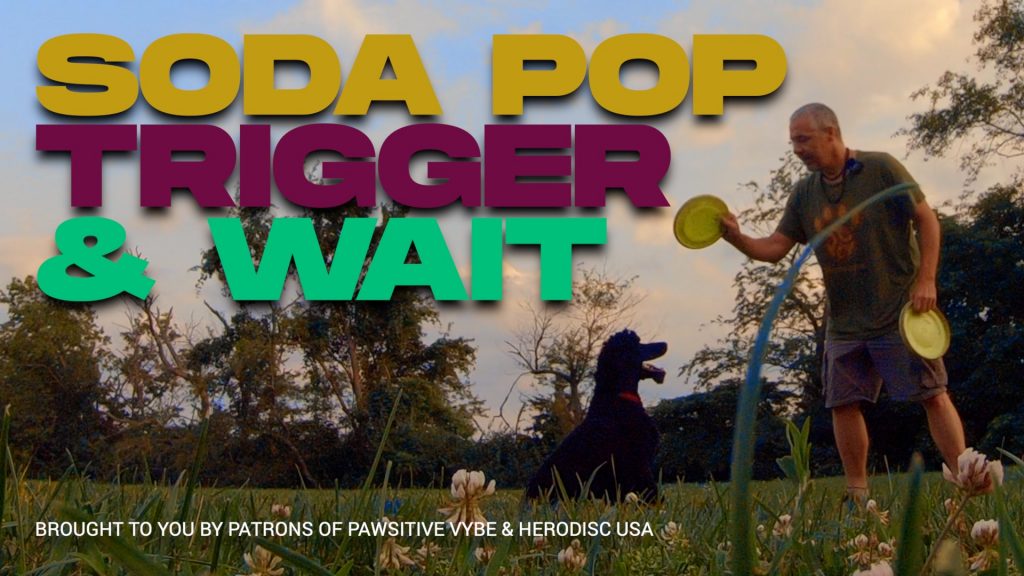
Trigger and Wait Installation with Soda Pop
Say “Hello,” to the new guy. Soda Pop is a 10 month old Standard Poodle who recently “career changed” from the Paws with a Cause assistance dog program. He was a bit too driven for that kind of work. Needless to say, Soda Pop LOVES to chase and bite plastic. In fact, he likes it a little bit too much. Ron uses the Flatwork Compass The Flatwork Compass is a disc dog form that separates the Flank from the Pass, creates a reliable trigger, and exposes the team to all of the key elements of Team Movement. https://www.youtube.com/watch?v=xW7Czz-7ows&list=PL8zWXaJfi1-synGOkBJ7u4p-WkotsL3LR... More to start the installation process of a strong Trigger and a solid Wait
The Flatwork Compass is a disc dog form that separates the Flank from the Pass, creates a reliable trigger, and exposes the team to all of the key elements of Team Movement. https://www.youtube.com/watch?v=xW7Czz-7ows&list=PL8zWXaJfi1-synGOkBJ7u4p-WkotsL3LR... More to start the installation process of a strong Trigger and a solid Wait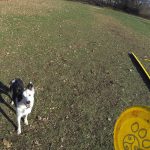 Waiting on cue and situationally is extremely important for disc dog freestyle training. The competition field might not see too much waiting going on as everything is supposed to be happening in flow,... More. Not bad for session #1…
Waiting on cue and situationally is extremely important for disc dog freestyle training. The competition field might not see too much waiting going on as everything is supposed to be happening in flow,... More. Not bad for session #1…
Trigger = Horizontal Disc
The primary Trigger we use here at Pawsitive Vybe is the horizontal orientation of the rim of the disc. When that rim lays flat in horizontal fashion, it’s game on – the dog activates and gets the target.
This horizontal rim orientation becomes a reliable Trigger for all bites, overs, throws, and flips – each of those maneuvers has the same Trigger. This common and clear Trigger dramatically reduces confusion and leads to a clear understanding of when to go after the disc.
Reliable Trigger = Solid Wait
Waits release to a conditioned response, which means that the dog stands still until something that has been taught is triggered. This is the very definition of a Wait.
Most problems with the Wait behavior come from not having a clear or reliable Trigger. Most disc doggers can’t identify an intentional Trigger for tricks, and many cited Triggers are more wishful thinking or desire,”Well, I want him to go when I…”
Create a solid Trigger and you have a solid Wait; it’s as simple as that.
Pose or Wait as Cookie
Marking a behavior with a clicker (marker) savvy dog standing in front of you results in the dog waiting for you to present the cookie. This momentary pause can easily be turned into a solid Wait.
If the pause always leads to a purposefully triggered skill like a Bite, throw, Roller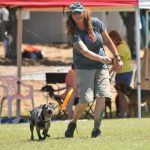 The Roller is a great throw for reinforcing a dog with a disc. Instead of flying through the air like a wing, the Roller rolls on the ground like a wheel; a fast,... More, or the Next"Next" encapsulates the dog's anticipation of a forthcoming reward, sparking motivation and excitement. This expectancy creates a driving force that propels the dog through training, forming a continuous loop of engagement. When "Next"... More move, this pause will become a Secondary ReinforcerA Secondary Reinforcer is a conditioned reinforcer that gets it’s value from it’s proximity to a Primary Reinforcer. The “primary reinforcers” in the game of disc are Bite and Chase, and Secondary Reinforcers... More by it’s proximity to the “cookie”.
The Roller is a great throw for reinforcing a dog with a disc. Instead of flying through the air like a wing, the Roller rolls on the ground like a wheel; a fast,... More, or the Next"Next" encapsulates the dog's anticipation of a forthcoming reward, sparking motivation and excitement. This expectancy creates a driving force that propels the dog through training, forming a continuous loop of engagement. When "Next"... More move, this pause will become a Secondary ReinforcerA Secondary Reinforcer is a conditioned reinforcer that gets it’s value from it’s proximity to a Primary Reinforcer. The “primary reinforcers” in the game of disc are Bite and Chase, and Secondary Reinforcers... More by it’s proximity to the “cookie”.
If the momentary pause becomes a Secondary Reinforcer it is a very simple process to drop a “Wait” cue on that momentary pause, and the dog will be happy to wait there until the Trigger happens and the “cookie” is presented. You can see this realization happen rather quickly with Soda Pop in this short introductory session.
A Pose can be thought of as a physically cued Wait. Offering the Pose or the Wait cue, as a cookie, and simply doing nothing will groom a functional Wait behavior in no time and will also transform these cues into Secondary Reinforcers, so the dog wants to perform them.
The Wait is Not Your Job – So Just Wait
It is not the handler’s dog to make the dog wait. “I can’t get him to wait!” is a common cry of many a frustrated dog trainer. And it’s a Freudian slip that says that you’re approaching the Wait in wrong manner.
Waiting is the dog’s job. Your job is to either mark the Wait and provide a cookie, or simply release the dog to a skill you have taught them. If you can do that, your dog will be waiting.
Watching this video you can see that I am not trying to get Soda Pop to wait. That’s his job. I’m just waiting to mark and reinforce him for stillness or releasing him from a momentary pause with a conditioned response. He can do all the crazy stuff he wants, it’s cool, I got time I know how to wait…
Stop Moving the Disc Around
Moving the disc around before the Trigger is installed draws attention to, and activates the target. A moving target is hard to resist for many dogs, especially when the disc only moves if the dog tries to get it – that’s what prey drive is all about.
One of the biggest problems with getting a dog to settle and Wait is a handler who quickly moves the disc to keep it away from the dog. “Man, I love that game of Keep Away! It’s a challenge and my handler really seems to love to play it…”
Stop Sign = Show the Logo
While working the Wait, if the dog is going bonkers trying to get the disc, turn the disc so the logo faces the dog. The logo facing the dog is not the Trigger and the dog can’t bite the faceplate of the disc, so the dog will have to wait, right?
Teach your dog a Trigger for biting and catching and you’ll get a Wait and thoughtful work.





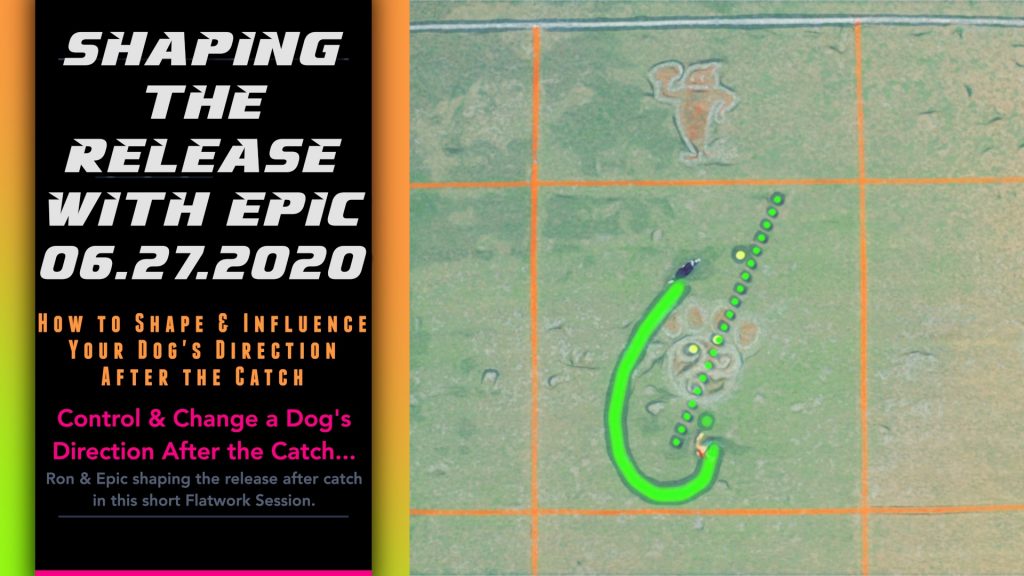
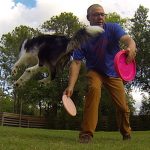
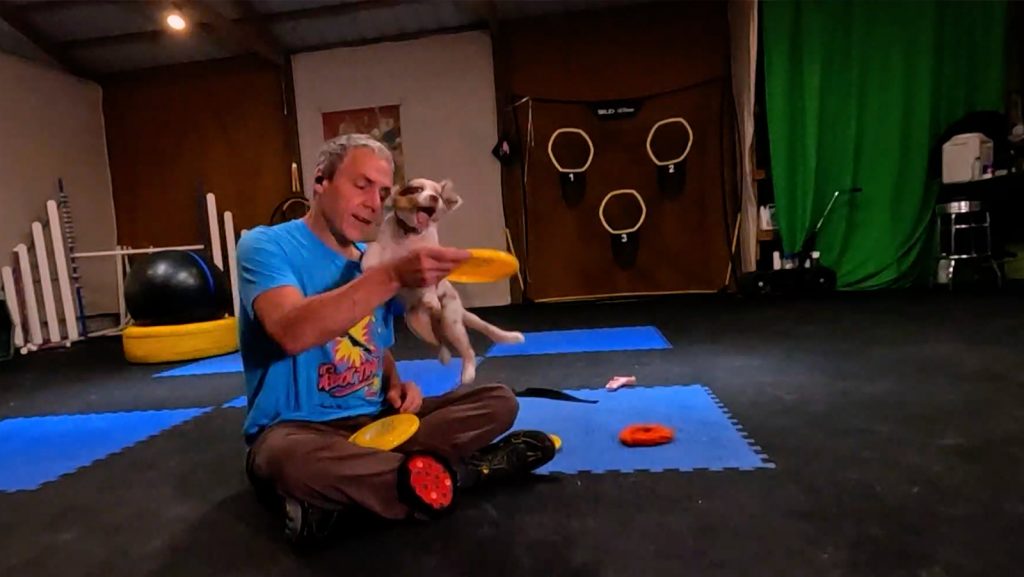
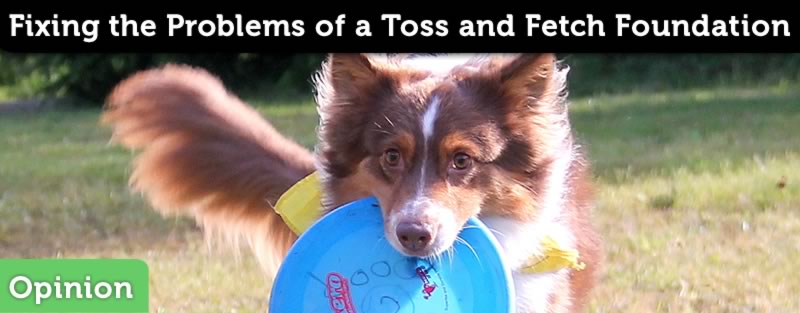
Welcome to the world of disc Soda Pop, Awesome demonstration with a newbie older pup and Great article Ron🤩